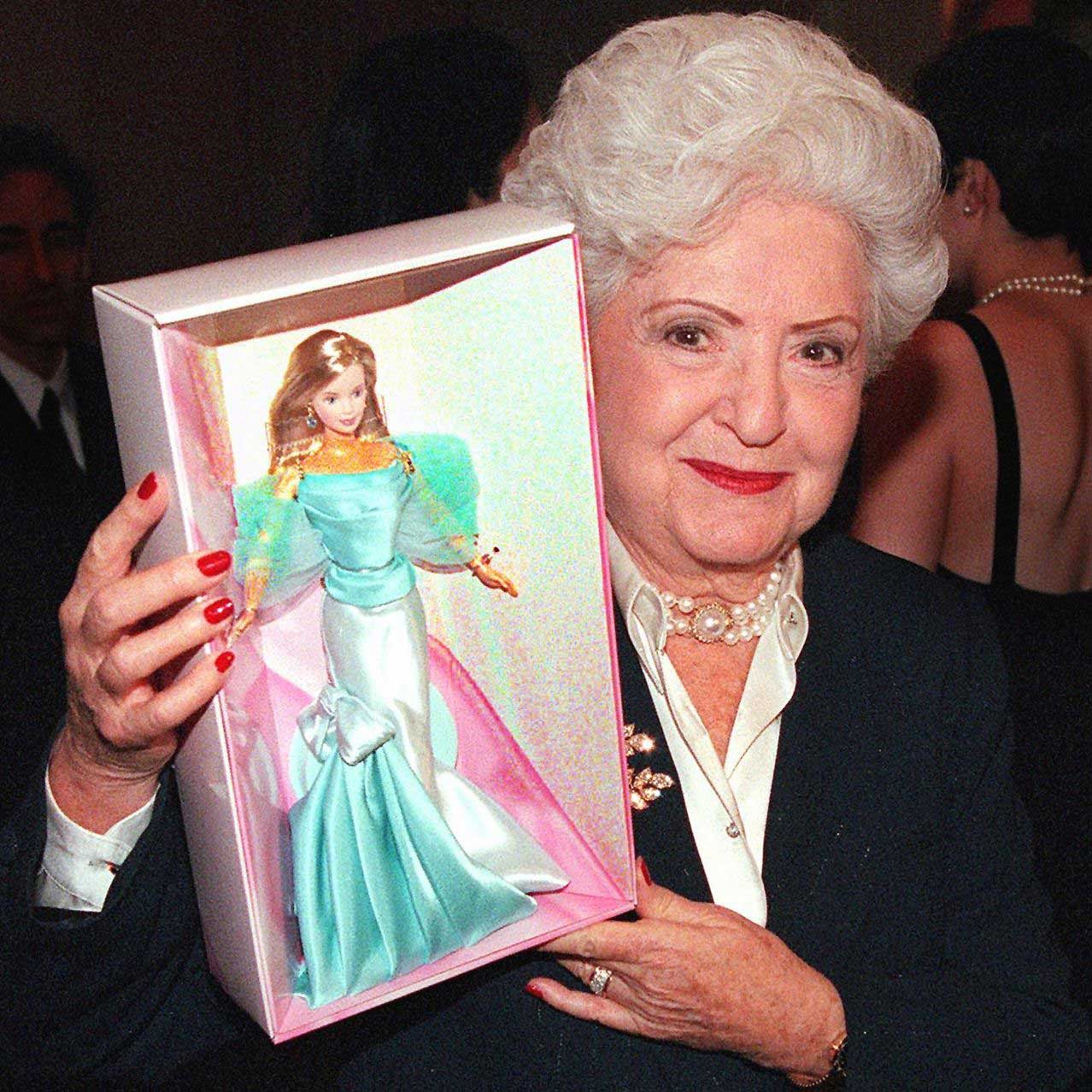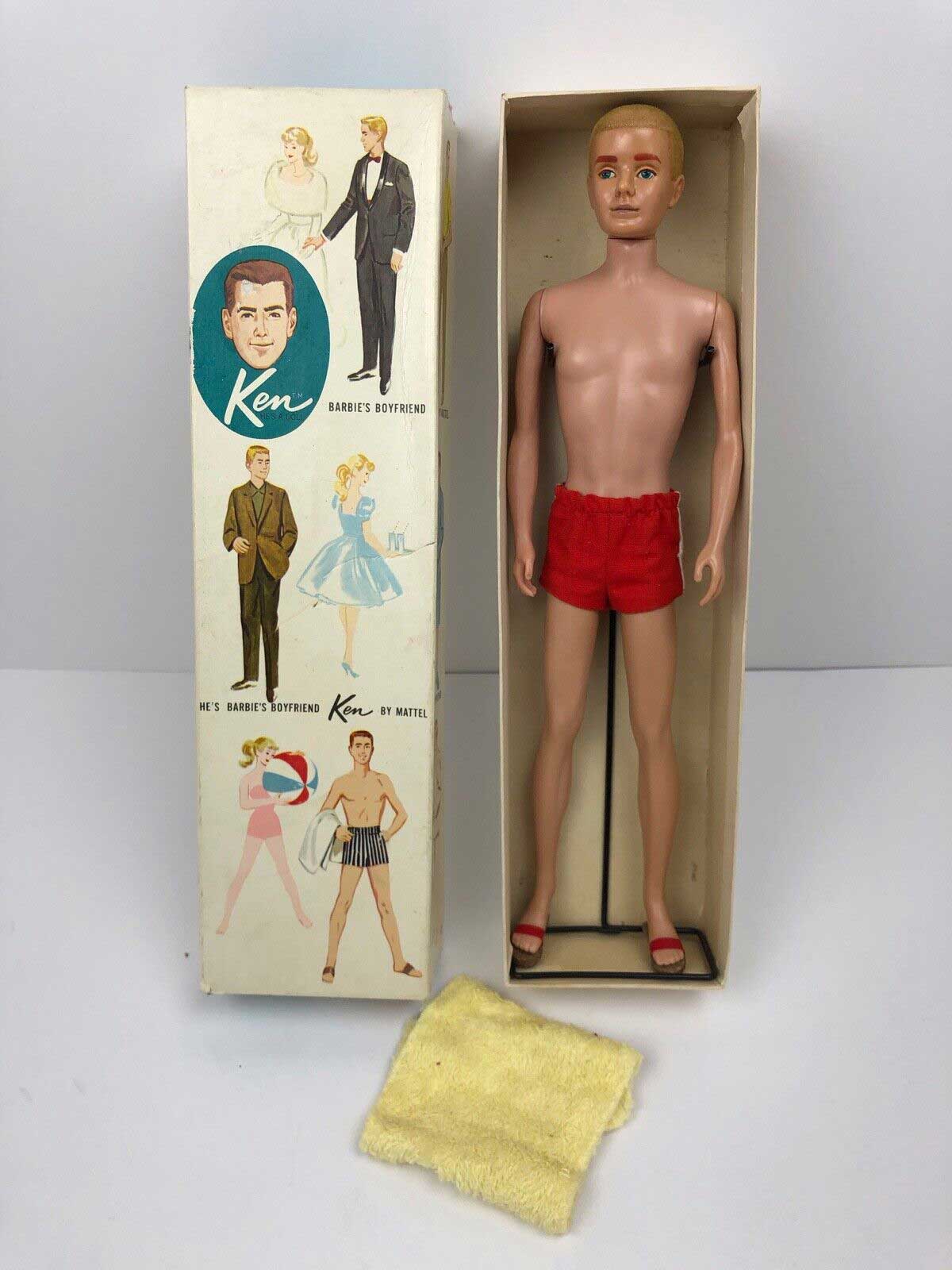Barbie, seen here in her original design, made her debut at the North American International Toy Show in 1959. (Image courtesy of Flatiron Nomad)
Apr 2024
Cover Story
What a doll!
Barbie continues to inspire after all these years
by Corbin Crable
Ruth Handler had seen it her entire life.
The dolls she and countless other women had played with as children were almost always baby dolls. Not so much toys as preparations for a life of motherhood, the dolls were a girl’s introduction to the limited roles available to a woman of centuries past. Wife. Mother. Nurturer. Caretaker.
It was postwar America, and Handler wanted to show girls that they had other paths in life they could choose as the world around them changed and grew. She watched as her daughter played with paper dolls, imbuing them with her own hopes and dreams, and Handler realized a large gap in the growing toy market existed for the girls who wanted more choices for their future – scientist, world traveler, artist, businesswoman, maybe even president. So, in 1959, she introduced a new doll to that market.
Her name was Barbie.

Ruth Handler, inventor of the Barbie doll
Ruth Handler, inventor of the Barbie doll, poses with her creation on the doll’s 40th anniversary in 1999. (Image courtesy of Agence-France Presse)
A doll for modern times
Barbie’s inspiration came from a German doll named Lilli, which Handler purchased on a European trip in 1956. Handler brought the doll back to the United States and, with the help of a local inventor, redesigned the doll, naming it ‘Barbie’ after her own daughter Barbara. Toy company Mattel, co-founded by Handler’s husband, would go on to market and release the doll.
Handler’s creation made her big debut on March 9, 1959, in New York City (her boyfriend Ken would be introduced two years later, in 1961). Wearing a black-and-white zebra print swimsuit and ponytail, Barbie was originally available to purchase as a blonde or brunette.
Though Handler enjoyed the fact that Barbie’s appearance distinctly mirrored that of an adult, test audiences appeared concerned about the prominence of her breasts. Who, critics asked, would want to play with a doll that has breasts? Still, despite those reservations, Mattel shipped the doll to toy stores and department stores — selling an estimated 350,000 units in its first year of release alone and shutting those critics down.

Mattel has even created Barbie dolls in the likeness of figures from pop culture and history
Mattel has even created Barbie dolls in the likeness of figures from pop culture and history, including Amelia Earhart, Frida Kahlo, and Katherine Johnson, released as part of the Barbie Inspiring Women Collection. (Image courtesy of Mattel)
In her early years, Barbie underwent several minor changes to her appearance. Most notably, in 1971, her eyes were adjusted to look forward instead of sideways, as the original doll appeared.

Barbie has had more than 250 careers
Barbie has had more than 250 careers throughout the decades, with astronaut being one of the earlier ones.
This doll was released in 1965. (Image courtesy of Mattel)
Changes within Mattel rocked the company as well. Ruth Handler and her husband Elliot both resigned from Mattel in 1975, in the middle of investigations that uncovered fraudulent financial reports filed by the couple. Ruth Handler pleaded no contest to the charges of fraudulent financial reporting and was fined $57,000 (the equivalent of $260,000 today) and sentenced to 2,500 hours of community service. She died in 2002 at the age of 85.
Barbie the media darling
In addition to being pioneering for the dreams she inspired in young girls, Barbie was also groundbreaking in her use of the relatively new medium of television to market herself to the public. It would be a strategy copied by dolls, action figures, and other toys throughout the rest of the century.

Barbie Fashionista line included differently abled doll
Some dolls in the Barbie Fashionista line included differently abled doll, including one that came with a wheelchair and ramp. (Image courtesy of eBay)

Ken Barbie’s boyfriend
Who could forget Ken? Barbie’s boyfriend was created in 1961. (Image courtesy of eBay
Besides loyal boyfriend Ken, other characters have been added to Barbie’s world in the doll’s history, including best friend Midge, her trio of sisters Skipper, Stacie, and Chelsea. In more recent decades, Barbie’s friends have become more racially diverse, too, with Mattel releasing Hispanic and African-American dolls such as Teresa and Christie, respectively. Not only has her circle of family and friends grown over the years – so has her physical world, including the Barbie Dream House and other playsets that reflect Barbie at work and at leisure. How would she get from one of those locations to the next? Why, her pink Cadillac convertible, of course, also made available at toy stores the world over. Her menagerie of pets is just as impressive, with more than 40 of them throughout her history, from domesticated fluffy friends like cats and dogs to more exotic animals such as lion cubs, zebras, and pandas.
She can do it all
Just as diverse as her list of pets and friends are the types of jobs Barbie has been given over the years, including astronaut, doctor, flight attendant, businesswoman, and even president, showing the young girls who play in her world that they, too, can be anything.
“Our brand represents female empowerment,” Richard Dickson, Mattel COO, said in a 2015 Time magazine cover story. “It’s about choices. Barbie had careers at a time when women were restricted to being just housewives.”
Barbie would go on to appear not just in TV advertisements but in programming, too, as Mattel expanded Barbie’s reach into an entire media franchise – there were syndicated TV specials, direct-to-video releases, and, in recent years, film series released on streaming services – and, of course, the 2023 critically acclaimed live-action film directed by Greta Gerwig and starring Margot Robbie and Ryan Gosling.
Barbie and body image
Barbie hasn’t existed without controversy, of course, most notably for what her critics say is promotion of an unrealistic body image. In the Time article, Evelyn Mazzocco, head of the Barbie brand for Mattel, says she “routinely receives hate mail and death threats over Barbie’s body.”
As Barbie sales dwindle in the first two decades of the 21st century, one might argue that Barbie is no longer involved in the discussion about what cultural influences contribute to poor body image in girls. Time counters that would be an incorrect assumption.
“A 2006 study published in the journal Developmental Psychology, found that girls exposed to Barbie at a young age expressed greater concern with being thin, compared with those exposed to other dolls,” the article states.
And literature disseminated by an eating disorder group at Chapman University gives dimensions for Barbie if she were a real woman: she’d be 5’9”, have a 39” bust, an 18” waist, 33” hips, and a size 3 shoe. She would weigh 110 pounds.

Lamilly Doll based on the body measurements of an average 19-year-old
In 2014, an artist and researcher, Nicholas Lamm, created a fashion doll based on the body measurements of an average 19-year-old woman, as defined by the Centers for Disease Control and Prevention. “Lamilly” was shorter than Barbie and has a wider waist, legs, and neck, as well as normal-sized feet. (Image courtesy of Parade)

The first African-American Barbie doll
The first African-American Barbie doll was released in 1967, with the more popular character Christie, seen here, released the following year. (Image courtesy of Mattel)
Mattel has tried to counter that data by releasing versions of Barbie with more curves and a more realistic body type – dolls that look more Christina Hendricks and Kim Kardashian than Kate Moss.
But, Time says, it simply might be too late for that.
“As much as Mattel has tried to market her as a feminist, Barbie’s famous figure has always overshadowed her business outfits. At her core, she’s just a body, not a character, a canvas upon which society can project its anxieties about body image,” the article states.
“’Barbie has all this baggage,’ says Jess Weiner, a branding expert and consultant who has worked with Dove, Disney and Mattel to create empowering messaging for girls. ‘Her status as an empowered woman has been lost.’”
Keeping up with the times
With the 21st century has also come more competitors hoping to dethrone Barbie from her status as a cultural icon – toys such as Bratz and dolls created for beloved animated films such as “Frozen,” just to name two.
Throughout all of the doll’s 65 years, Mattel has worked to strike the delicate balance between keeping Barbie relevant in ever-changing times while keeping her timeless and classic. In addition to giving her careers that reflect technological advances, such as computer programmer, the company has attempted to make visible introduce more racially diverse characters (African-American dolls had altered facial features, hair texture, and skin tone), characters who are presented as differently abled, and even one doll presented as pregnant (critics charged that the doll promoted teen pregnancy, even though the character was marketed as being married).

Mattel released a line of Barbie dolls last year
Mattel released a line of Barbie dolls last year to coincide with the opening of “The Barbie Movie” starring Margot Robbie in the title role. (Image courtesy of Mattel)
Though the original Barbie doll sold for $3 in 1959, its value today is in the thousands – at one auction, a mint-condition original doll still in its box went for $3,500. The doll remains highly collectible, with Mattel estimating that there are more than 10,000 avid collectors in the world, 90 percent of them women, with an average age of 40, and who purchase 20 or more dolls each year.
Through her success and controversy, Barbie’s status as a cultural icon endures, writes Julian Adams in a 2023 editorial published on ResearchLive.com.
“Cultural icons create emotional connections with people, which in turn, influence our beliefs, values, emotions and ultimately behaviour,” Adams explains. “Cultural icons define specific aspects of society at a given point in time. Barbie is one such icon – whether you love or loath her, she has left an indelible mark on society.”


